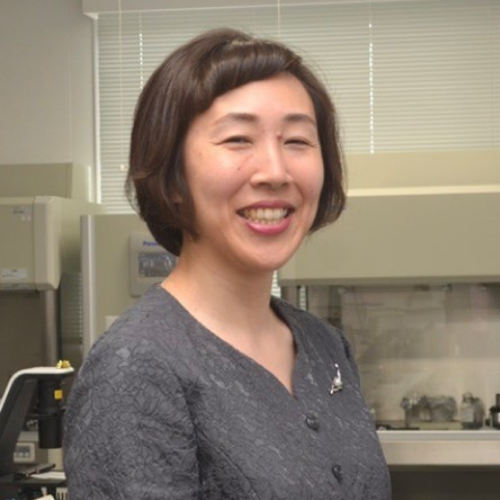Our Research Network is a fierce driving force behind therapeutic development and future treatment. Let’s find out what makes them so passionate about KIF1A! Each month, one of our invested members of the KIF1A Research Network will be in the spotlight. Dr. Kumiko Hayashi is next up to share a bit about herself in this month’s Q&A.

Dr. Kumiko Hayashi
Associate Professor, Department of Applied Physics, Tohoku University, JapanDr. Hayashi joined the KIF1A.ORG Research Network in 2021 after being introduced by another KIF1A researcher. She would like to contribute to the understanding of KAND by providing new measurement methods and theoretical models based on physics. Her PhD is in physics, and as a physicist and biophysicist, Dr. Hayashi is interested in development of measurements.
Dr. Hayashi is also interested in international exchanges among people in biophysical societies. She makes an effort to organize Japan-US joint symposiums on motor proteins, including KIF1A, as a member of International Affairs Committee of the Biophysical Society of Japan and the council member of the Biophysical Society. She hopes the exchanges among two countries, in which motor protein studies are popular, promote the understanding of KAND.
If you could have any superpower, what would it be and why?
I have my unique oriental views of life and death about the afterlife and reincarnation. If I could have a superpower to talk with gods, I would ask them to meet my family and friends, who passed away recently, in the next life again.
When did you know you wanted to be a scientist? Why were you drawn to this field?
I have never thought that I wanted to be a scientist. I just continued doing what I like. By this, I mean research. In addition, science has power to help people more peacefully by contributing to technological advances as well as politics and finance.
What do you love most about your job?
Collaboration. Possibilities are limited when I’m alone, but interaction with people enables my continued growth.
What is the most challenging aspect of your job?
As a physicist, my job involves proposals of new measurement methods applicable to biological systems. It’s really difficult to show enough data and persuade people about new measurements. But, it’s rewarding.
What development are you most excited about in terms of KIF1A research?
Many people characterize KIF1A motility by using KIF1A’s velocity and force. Our proposal is the measurement of the number of KIF1A molecules hauling a synaptic cargo collectively, because we think multiple-motor transport contributes to the stability of axonal transport. It would be a great honor if our proposal is helpful to understand KAND.
I couldn’t get through a day at work without:
Drinking several cups of coffee. I go to Starbucks every day to read magazines at the start of the day.
I am most motivated by:
Popularization of the measurement method as a physicist, rather than biological findings. I’d like to see the success of other people’s studies that use our measurement methods.
When you are not working, what do you like to do?
I usually take ballet lessons on weekends. I started it when I got a grant-type scholarship for a PhD student. Training the core of the body leads to training the soul.
